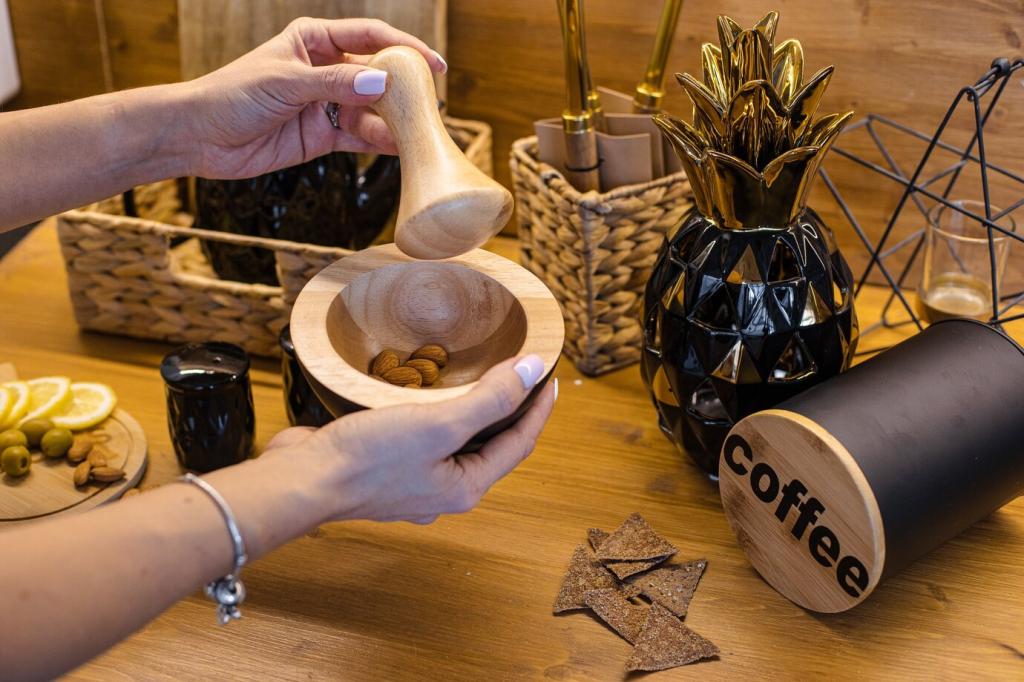Naturally Finished, Truly Green: A Fresh Look at Sustainable Furniture
Chosen theme: Natural Finish Options for Green Furniture. Discover how plant-based oils, waxes, shellac, milk paint, and soap finishes can elevate beauty, protect indoor air quality, and honor the character of wood—without compromising sustainability or style.



Matching the Finish to Wood Species and Everyday Use
Open Grain vs. Closed Grain: Letting the Wood Speak
Oils highlight the valleys in oak and ash, deepening contrast; on maple or birch, they add quiet honeyed warmth. If you love texture, oil and wax amplify it; if you prefer seamless smoothness, consider a shellac base sanded between coats.
High-Traffic Surfaces Need Thoughtful Layers
Dining tables and entry benches benefit from hardwax oils that combine vegetable oils with natural waxes for tougher protection. They cure to a resilient, repairable surface that stands up to daily use without the plasticky look of synthetic varnish.
Color, Sheen, and Mood Without Synthetic Glare
Natural pigments in oil or milk paint let you tune saturation and tone while keeping a low-sheen, human-scaled look. Subtle gloss can be built with additional burnishing, inviting light to gently play across the wood instead of overwhelming it.
Prep with Respect: Clean, Sand, and Dust-Control
Use mild, biodegradable cleaners to remove grime, then sand with progressively finer grits to open the grain evenly. Vacuum and tack thoroughly; dust trapped under natural finishes can dull clarity and reduce the deep, luminous look you’re aiming for.
Thin Coats, Patient Cures, Safer Rags
Apply thin layers with a lint-free cloth or brush, letting each coat polymerize fully before the next. Lay oily rags flat to dry outdoors or store in a sealed metal container with water to prevent spontaneous combustion—safety is part of sustainability.
Ventilation Without Waste
Cross-ventilate to speed curing while avoiding extreme temperature swings that can hinder polymerization. Consider a small fan near an open window and pause HVAC recirculation briefly during application to keep emissions moving outward, not back through living spaces.
Stories from the Workshop: Natural Finishes in Real Homes
An oak dining table inherited from grandparents gained a second life with three thin coats of hardwax oil, each buffed lightly. The finish withstood pasta nights, watercolor projects, and holiday candlelight, collecting a patina of memories rather than scratches.

Stories from the Workshop: Natural Finishes in Real Homes
A thrifted maple side table rescued from a curb transformed under dewaxed shellac, brushed in quiet evening sessions. Its amber warmth now reflects lamplight onto book pages, and small water rings polish out quickly with a gentle rub and fresh pad.
Routine Cleaning That Protects the Finish
Dust with a soft cloth and use diluted soap flakes in warm water for sticky spots. Avoid harsh solvents that strip oils or cloud wax. A little attention often prevents bigger fixes and helps surfaces age calmly, not prematurely.
Spot Repairs You Can Actually Enjoy
For minor scuffs on oil or hardwax finishes, rub in a teaspoon of oil, wait, then buff vigorously. Small dents compress less visibly after gentle steaming through cloth, followed by a light re-oil—repairs that reward care rather than punish use.
Refresh Cycles that Build Character
Every six to twelve months, a simple wax buff or ultra-thin oil coat restores glow and water beading. Over time, these micro-layers create depth that factory varnishes can’t rival, telling a quiet story of stewardship and everyday rituals.
Sourcing Smarter: Ingredients, Labels, and Certifications
Read Beyond the Front Label
Look for full ingredient disclosure, low-VOC statements, and details on solvents. Plant-derived diluents like citrus terpenes are preferable when used responsibly, and products that publish test data show respect for both craftspeople and indoor environments.


Certifications and Local Wisdom
Seek credible eco labels and ask retailers about regional makers using responsibly sourced oils and waxes. Local suppliers often understand climate-related curing nuances, offering advice that can save hours of trial and reduce finishing waste significantly.
